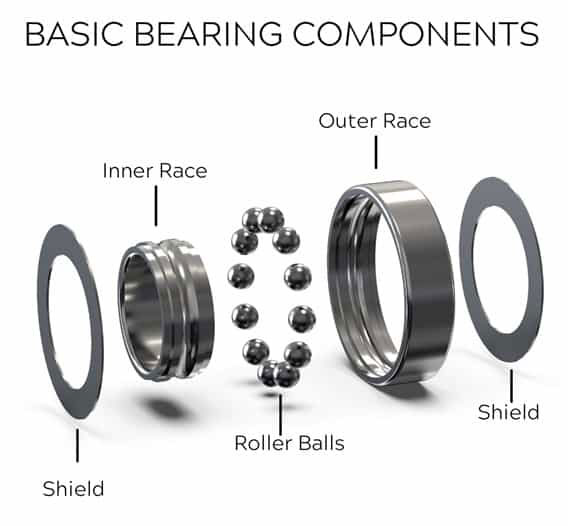Home / News / The Most Basic Components of Thrust Ball Bearings
The Most Basic Components of Thrust Ball Bearings
The most basic components of thrust ball bearings are balls and cylindrical rollers. They also may have needle rollers and tapered rollers. Most of these bearings are enclosed in cages to provide uniform roller loading. In some cases, magnetic bearings are used for thrust applications as well. Generally, thrust ball bearings are used in machines where the weight of the equipment being moved is insignificant.

SKF
A thrust ball bearing is a basic component of a machine's rotating components, used to reduce the friction during rotation. They are made of durable steel and have two strong thrust plates and matching ball grooves along the raceway. This design enables the bearing to accommodate axial and radial loads with a small height. The basic components of a thrust ball bearing are as follows:
Thrust ball bearings are manufactured as single or double-direction bearings, depending on the design requirements. The primary purpose of a thrust ball bearing is to accommodate axial loads during a shaft rotation and to protect it from radial loads. SKF supplies single and double-direction thrust ball bearings to meet the most demanding requirements. Among these, they offer Solid Oil coated bearings, which are designed to accommodate axial loads.
Thrust ball bearings are commonly used in machine tools and other industrial applications that require high speed and precision. SKF super-precision angular contact thrust ball bearings are suitable for these applications due to their high axial stiffness and running accuracy. They also offer radial and axial support and guidance.
Thrust ball bearings come in many different designs. One type is cylindrical and consists of bearing balls in a ring. Thrust ball bearings are designed for low thrust and high-axial load applications, while thrust roller bearings have a high carrying capacity. Despite their low-load capacity, cylindrical thrust roller bearings are cheap and highly durable. However, they are prone to wear due to differences in radial speed.
When a bearing fails, it is critical to determine the cause. Three common causes are contaminants, misalignment, and overloading. Contamination is the leading cause of bearing failure, especially airborne contaminants. They can damage the bearing, so lubrication should be clean. Additionally, misalignment can cause excessive loads and vibration. Therefore, regular maintenance is crucial. It saves money and time in the long run.
- Previous: Thrust Roller Bearing Application
- Next: Types of Thrust Ball Bearings











